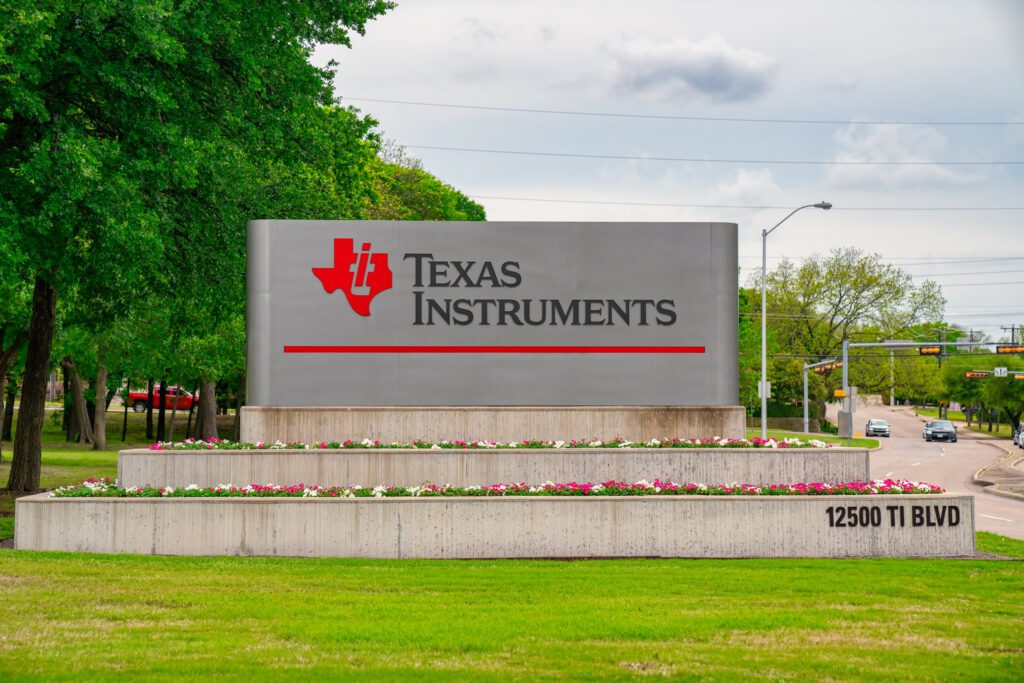Texas Instruments is set to receive a record-setting subsidy for its new semiconductor campus in North Texas, as states and cities continue their frenzied bid to court new investment in the industry.
Last year, TI broke ground on the first of four new semiconductor fabrication plants (“fabs”) it plans to build in the city of Sherman, less than an hour’s drive from the company’s headquarters in Dallas and its newest fab in the suburb of Richardson. All told, the campus will cost over $29 billion and employ 3,200 workers.

Despite Sherman’s proximity to these existing facilities, TI claimed that only hefty property tax breaks would make the location competitive with alternative sites in Singapore.
The school district, city, county, and local community college all obliged, awarding the company abatements and rebates worth an estimated $2.36 billion over 35 years.
These cumulative local tax savings alone make this the largest subsidy package yet granted in the state of Texas. It exceeds the second largest in the state—a 2021 subsidy package Samsung received for its new semiconductor fab outside of Austin—by over $1 billion, and is the seventh largest deal overall in our Subsidy Tracker database.
What commitments did local officials secure from TI by agreeing to forego an average of $67 million every year for the next three decades?
The company agreed to invest $2 billion per fab and employ at least 350 workers within 10 years of a fab’s completion. Since each is expected to cost upwards of $6.5 billion and employ 800 workers, the company has significant leeway to pare back the scale of the project without jeopardizing its tax breaks.
Of the 3,200 total workers employed across all four fabs, TI also committed to paying 100 workers $74,947 a year.
There are no wage requirements for the remaining 3,100 workers, but the company disclosed in its Chapter 313 abatement applications that these workers will earn an annual wage of $47,931. This is roughly equal to the average annual wage workers are already earning in the Sherman-Denison metropolitan area, meaning the project will have no appreciable impact on the quality of jobs available.
Local tax breaks a fraction of total public support for TI’s Sherman campus
In addition to saving $2.36 billion on its property tax bill, TI will also enjoy a 20% discount on water and wastewater service from the city of Sherman.
Semiconductor fabs are notoriously thirsty operations. Sherman has already issued a $200 million city utility bond to finance infrastructure improvements needed to accommodate increased demand from TI and GlobiTech, another semiconductor firm with plans to expand in the city. (GlobiTech received $570 million in local property tax abatements and a utility rate discount as well).
City officials predict these two projects could double the amount of water Sherman treats, which they contend will help keep rates low for households.
This is little comfort, though, to residents of the neighboring town of Howe, who were informed in May that Sherman would be terminating its contract to provide them with water treatment services. Howe had racked up $300,000 in unpaid sewer bills due to unusually heavy rainfall and will now be on the hook to somehow finance construction of its own water treatment facility.
The poverty rate in Howe is 28%, more than double the share of low-income residents in Sherman.
Even if the project ends up being of some benefit to utility ratepayers in Sherman, it’s unlikely to bring any direct fiscal benefit to the city itself for decades to come.
For the first 20 years of its life, TI’s campus will net the city an average of $2 million a year in new property tax revenue. That’s less than what the city currently spends servicing its existing debt obligations, suggesting that most of the new revenue the project generates will go to paying off debts associated with necessary infrastructure improvements.
These local subsidies already rank TI’s megadeal among the ten largest Good Jobs First has ever recorded, but the public’s contribution to this project is unlikely to end there.
The state of Texas recently established a $698 million Semiconductor Innovation Fund that will disperse grants to chipmakers, with the hope of leveraging additional grant money from the federal government’s $39 billion CHIPS Incentives Program.
Regardless of whether TI manages to secure any state and federal grant funding, it will still be able to shave down its federal income tax bill through the CHIPS Act’s 48D investment tax credit. This refundable credit is worth 25% of eligible companies’ capital spending on projects that break ground between 2023 and 2027.
Should its first fab end up costing $6.4 billion as expected, TI will be eligible for a $1.6 billion credit.
TI cries poor, but showers billions on shareholders
A scan of the company’s annual SEC filings drives home just how egregious these local abatements really are.
In the last five years, between 2018 and 2022, Texas Instruments made $33.7 billion in profits. Of that, the company spent $4.2 billion on net new investment in equipment and physical assets, while $25 billion went to shareholders in the form of dividends and stock buybacks.
But TI insists $67 million a year in local property taxes is too burdensome to make investing in the company’s own home state worthwhile.
That such a preposterous claim is taken seriously testifies to the gross power imbalance that characterizes subsidy negotiations between large corporations and the communities where they operate.
As the Sherman Economic Development Corporation’s current president aptly summed it up, “That’s economic development… It’s like playing poker with a mirror behind your back.”
He’s right. Which is why when fabulously profitable companies like Texas Instruments come sniffing around for subsidies, we need to call their bluff.